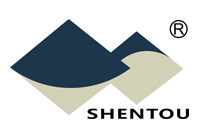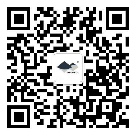CHINA AUTOMOTIVE SUPPLIER QUALITY MANAGEMENT BRIEFING
12/01/2021
Vol. 5, No. 12, December 2021

① QUALITY CHALLENGES & SOLUTIONS WITH YOUR SUPPLIERS IN CHINA
Factory Audits & Quality Inspections
During & Post COVID-19:
On-site Supplier Audits + Remote Participations by International Buyers(VIII)
(Continued from the last issue)
▌The implementation of on-site product inspection plus remote participation by international buyers
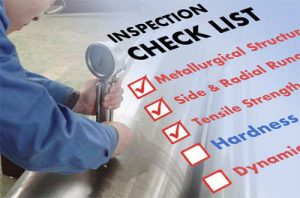 Once international buyers have selected the qualified supplier, the supplier is usually managed by the customers’ product or purchase managers, with purchase orders automatically generated based on the safety stock level determined by the companies’ ERP systems.
Once international buyers have selected the qualified supplier, the supplier is usually managed by the customers’ product or purchase managers, with purchase orders automatically generated based on the safety stock level determined by the companies’ ERP systems.
Typically the safety stock levels for consumables are relatively higher as users tend to change those parts more frequently, and the stock levels for the non-consumables are usually set lower, resulting in purchase orders of these parts with multiple product types, smaller order quantities and higher ordering frequencies. These factors will contribute to extended production schedules by the suppliers and more challenges to product quality controls. Because of the relatively lower volumes for each model, it is difficult to arrange the productions on the production lines, instead they would have to be produced separately by high degree of manual production processes, with the quality likely varying according to each worker. Consequently the consistence of the product quality is weak, and the products’ ability could be impacted.
How to exercise quality control with such challenges? Since we could not have the suppliers produce these parts with batch productions on assembly lines, we are left with the only option of focusing on product quality controls during product inspections, and demand suppliers to provide corrective and preventive action plans if any quality nonconformities are discovered. Many suppliers have been able to implement effective quality controls on such small-order productions through continuously raising the quality awareness of their workers, including: fixed persons and posts, designated equipment, strict manual production process and increased inspection frequencies.
How to implement product inspections so that customers could be confident that product qualities are effectively controlled, especially with the extra challenges posed by COVID-19? Let us share our experience of pre-shipment inspections over the past 2 years, with the adoption of “on-site inspection + remote buyer participation” practices.
▌Determination of product inspection criteria
The inspection criteria needs to be re-confirmed after the suppliers have completed the productions for the customers’ orders. For orders with specific technical requirements from the customers, these requirements must be incorporated into the final inspection criteria. For products without customer technical requirements, the inspection criteria should also include the suppliers’ own inspection standards as well as input based on the inspectors’ understanding of and experience with the products.
The final inspection standards should cover at least the following:
A. All visual-related inspection items, including: product surface treatment and appearance, labels or printings on the products; customers’ logos, model numbers, color box appearance, dimensions and appearance of the inner and outer boxes, pallets’ appearance, shipping mark, etc.;
B. Inspections of main dimensions-related items: these inspections should be based on installation and fit dimensions and other measurements identified in the drawings;
C. Inspection of surface roughness-related items: these inspections are primarily based on the surface roughness of the installation side or working side that are identified in the drawings;
D. Inspections of weight-related items: these inspection items are mostly for products that consist of single materials, use simple production processes, and with requirements for heavy load or tensile strength, such as brake drums, steel wheel rims, brake discs, ratchet tie-downs, and some structure parts made of steel or aluminum;
E. Inspections of material-related items: for parts with single materials, it is necessary to check the consistence between the material inspection reports produced by the suppliers and the material inspection reports during the incoming quality control (IQC) process. When the suppliers are not capable of testing the materials, the materials should be tested by a third-party. For parts with multiple materials, inspection items with impact on safety and product life should be identified;
F. Inspection of performance-related items: with products for different applications, the material compositions and production processes are different, so are the performance requirements. So different performance inspection items and criteria should be prepared for different products, For example, for brake discs, the inspection checklist should include: hardness, tensile strength, metallurgical structure, side and radial runout, dynamic unbalance, etc.
(To be continued)
By Felix SS YUAN
② CRITICAL FAILURE MODES / QUALITY CONTROL POINTS IN FOCUS
Portable Charger for Electric Vehicles (I)
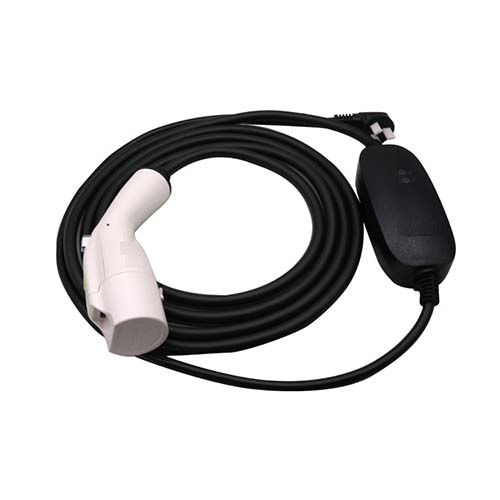
The portable charger for electric vehicles is a portable and convenient charging solution. Its small weight and volume are very suitable for carrying with the vehicle, enabling the replenishing of power for electric vehicles on the road or away from fixed charging stations to reduce mileage worries. The charger allows users to easily charge EV / PHEV from home / public power sources.
The charging efficiency of portable charger depends on the power range of on-board charger (OBC). A good electric vehicle charger can charge according to the maximum power of electric vehicle.
▌Critical quality controls points
1. The connection between the terminal and the plug (socket) is firm
2. The socket terminal is not missing or deformed
3. The control module is welded well without false welding or looseness
4. There is no assembly error with the plugs at both ends that could result in water ingress in the control box.
(To be continued)
By WJ. LIN
③ KEY CONCEPTS & PRACTICES IN SUPPLIER QUALITY MANAGEMENT
4-level documentation requirements for ISO 9001
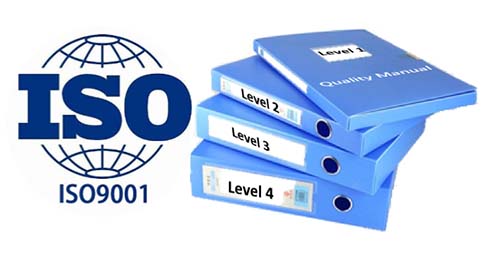
For automotive spare parts manufacturer, the certification of ISO 9001 for its quality management system (QMS) is the basic requirement when it comes to the issue of quality. It is a mark demonstrating that the company complies with international quality standards and delivers quality products and services to its customers.
For the documentation for ISO 9001, it will certainly depend on many factors of the organization, such as the size, the type of products and services offered, the complexity of the production, but in principle, there are 4 levels of required documentations:
-Level 1 – Quality Manual
-Level 2 – Documented Procedures
-Level 3 – Work Instructions
-Level 4 – Records and Forms
④ CHINA INDUSTRY & MARKET UPDATE
Cost of raw materials:
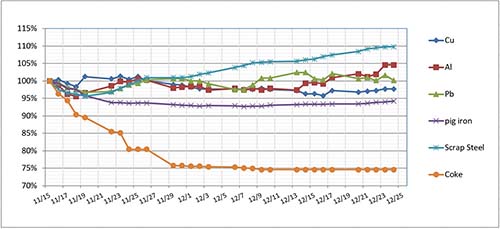
Exchange rates:
![]() USD/RMB: 1:6.3762
USD/RMB: 1:6.3762
![]() EUR/RMB: 1:7.1987
EUR/RMB: 1:7.1987
![]() RUB/RMB: 1:0.0858
RUB/RMB: 1:0.0858
December 2021
Remark: Exchange rates are 30-day average from November 23 to December 24
The above information is for reference only
⑤ IT HELPS TO KNOW...
Year-end Message from the Editor
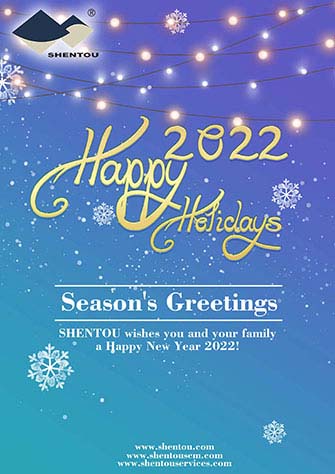
2021 has proven to be a year with periodic signs of hopefulness from the pandemic, repeated frustrations with never-ending new variants or outbreaks, continuous jolts to the global supply chains, and persistent efforts by the enduring communities of the automotive industry worldwide despite all the challenges.
We talked about the “new norms” early in the 2-year old pandemic that were likely to set in when all of this is over. Looking at the status of the global supply chain of the automotive industry, with the rocking prices of raw materials, the eve-rising products costs, the sticking high-level of international shipping, not to mention the continuously appreciated Chinese currency against the US dollar, it sure looks like the “new norms” are already here.
We are entering 2022 with almost the same, if not deeper, uncertainties as we did at the end of the last year, from everything that is happing in the global economy to the much worrying potential impact by the new variant Omicron.
Life goes on, so does the business of the global automotive industry. And let us all join our efforts to fight the pandemic and hold high hopes that we shall overcome and we will grow stronger.
Thank you again for your support in 2021 and have a Happy Holiday season!
SHENTOU SUPPLY CHAIN MANAGEMENT CO. LTD. is a Shenzhen, China, based company serving international automotive clients in the implementation of their China strategies and programs. CHINA AUTOMOTIVE SUPPLIER QUALITY MANAGEMENT BRIEFING is a bi-monthly newsletter published by Shentou to address the specific and unique quality challenges and concerns international automotive companies face with suppliers in China. Comments are welcome at qms@shentou.com. Click here to subscribe.
